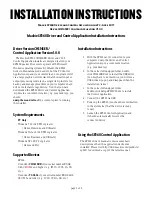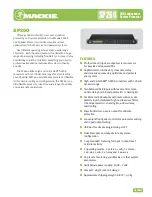Reviews:
No comments
Related manuals for Chapter C

OfficeRoute
Brand: 2N Pages: 11

stargate
Brand: 2N Pages: 5

EasyGate IP
Brand: 2N Telekomunikace Pages: 24

SP260
Brand: Mackie Pages: 2

SP260
Brand: Mackie Pages: 5

Nova430i
Brand: Baicells Pages: 8

DR-4100P Series
Brand: Idis Pages: 30

Z-100 Series
Brand: Zenith Data Systems Pages: 64

AOC-SIMLC
Brand: Supero Pages: 68

NanoAAB
Brand: Gate Pages: 8

OVP800
Brand: IFM Electronic Pages: 14

Wireless Connectivity Cape
Brand: Element14 Pages: 2

LPR-100
Brand: ACTi Pages: 14

I848ASR1A
Brand: JETWAY Pages: 47

PC-HSICA
Brand: DayTronic Pages: 13

DR-8516
Brand: Idis Pages: 28

GSP 300
Brand: Sennheiser Pages: 22

JetFusion 2004
Brand: Paradyne Pages: 216

















